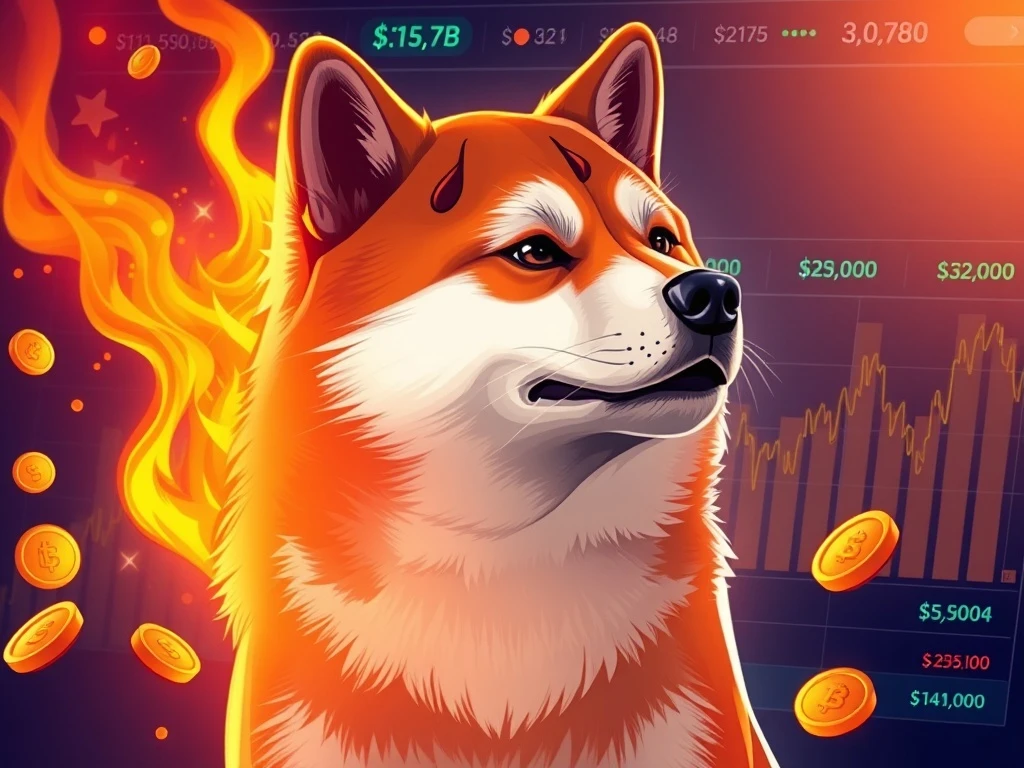Shiba Inu Burn Rate Explodes 16,715% as SHIB Price Plunges 5.03% – What’s Next?

The Shiba Inu (SHIB) community is buzzing as the token’s burn rate skyrockets by an astonishing 16,715% in just 24 hours. But here’s the twist: SHIB’s price dropped 5.03% to $0.00001348 during the same period. What does this mean for the future of this popular meme coin? Let’s dive in.
Shiba Inu Burn Rate: A Deflationary Surge
The Shiba Inu ecosystem witnessed a massive spike in token burns, with 601 million SHIB permanently removed from circulation. This marks a significant acceleration in deflationary efforts, far surpassing the previous week’s 368.98% increase. Key points to note:
- Total SHIB supply remains at 589.2 trillion tokens
- Sustained burns needed for meaningful price impact
- Current burns represent just 0.0001% of total supply
SHIB Price Dips Despite Burn Momentum
While the burn rate surged, SHIB’s price dropped 5.03% to $0.00001348, with market cap falling to $8.01 billion. Technical indicators show:
| Resistance Level | Support Level |
|---|---|
| $0.00001411 | $0.00001300 |
The price has struggled to break above resistance, while support at $0.00001300 has held firm. A breakdown below support could trigger further declines.
Will Token Burns Eventually Boost SHIB Price?
Analysts remain divided on whether burn mechanisms can drive long-term value for meme coins like Shiba Inu. While burns reduce supply, market sentiment and demand play crucial roles. The current data suggests:
- Short-term sentiment remains bearish
- Burns alone may not immediately impact price
- Technical levels more indicative of near-term movement
FAQs About Shiba Inu’s Burn Rate and Price
Q: Why did SHIB price drop despite the burn rate increase?
A: Price movements depend on multiple factors including market sentiment, trading volume, and broader crypto market trends. Burns alone don’t guarantee price increases.
Q: How significant is the current burn rate for SHIB’s total supply?
A: While the percentage increase is dramatic, the actual burned tokens represent a tiny fraction (0.0001%) of SHIB’s massive total supply.
Q: What’s the long-term outlook for SHIB with these burn mechanisms?
A: Sustained burns over time could potentially impact price, but market demand and adoption will play equally important roles in SHIB’s future valuation.
Q: Should investors focus on burn rates or technical analysis for SHIB?
A: Both metrics are important. While burns may influence long-term supply, technical levels often better indicate short-term price movements.









